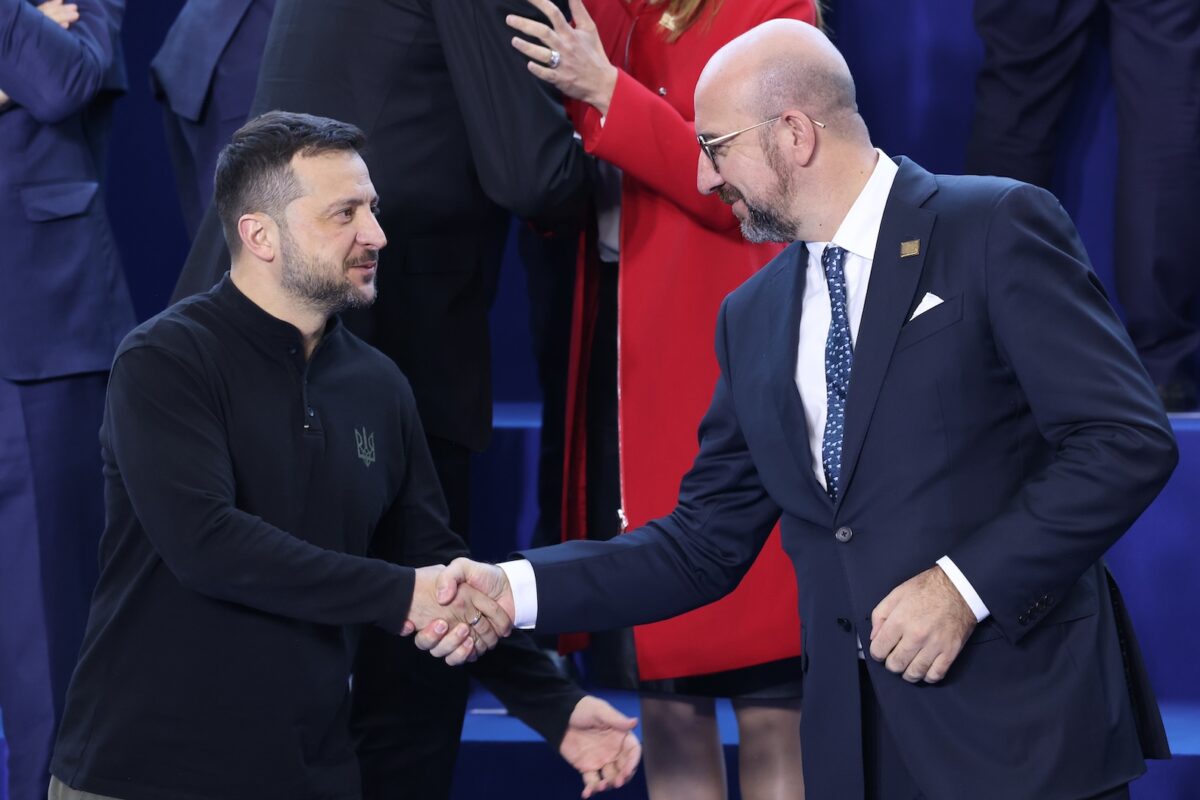Donald Trump’s election victory has sparked fears that the US could reduce or stop military and financial aid to Ukraine.
Leaked plans from his inner circle, which urge the country invaded by Russia to reach a negotiated peace with territorial cessions, appear to confirm these fears. However, although the US is by far the most important supplier of weapons and ammunition to Ukraine, the EU is the most important donor of civilian financial aid.
In a new study, the Vienna Institute for International Economic Studies (wiiw) has examined what the EU would need to do to help Ukraine to win the war and build a prosperous economy that could join the EU and be successfully integrated into the single market in the medium term.
“Should Trump actually halt or reduce aid to Ukraine, the EU would have to step in. This, of course, also applies to the financing of weapons and ammunition. Ukraine’s survival depends on this,” says Olga Pindyuk, a Ukraine expert at wiiw and author of the study, which was prepared for the Austrian Ministry of Finance.
However, due to a lack of sufficient production capacity for arms and ammunition, this would likely require a tour de force involving alternative suppliers, such as South Korea.
Grants instead of loans
To date, the EU has provided the lion’s share of financial aid to Ukraine in the form of loans.
“This has driven up war-torn Ukraine’s debt, jeopardising its macroeconomic stability, growth prospects and reconstruction,” Pindyuk critically notes. The Vienna Institute is forecasting a budget deficit of 19 per cent of GDP and a debt level of around 100 per cent of economic output for the country this year.
Compared to 2021, the national debt has doubled and is set to rise further. The study therefore argues in favour of a massive and rapid increase in aid to Ukraine, among other things.
As is well known, there have been major delays in the provision of needed funds in 2024, and they also do not come close to covering Ukraine’s military needs. For example, due to inadequate air defences, Russia can continue to destroy the country’s energy infrastructure. Instead, the money should primarily flow in the form of grants that do not have to be repaid. The recent past shows why.
Just a few months ago, Ukraine was on the brink of defaulting on its sovereign debt and had to restructure its foreign liabilities.
“Despite the restructuring, the country will have to use at least six per cent of GDP on debt repayments on average in the coming years, almost 14 per cent this year, and around 10 per cent next year,” Pindyuk notes.
If the economy grows more slowly or if even more funds are required for military defence, the debt burden could become even more overwhelming.
These calculations do not even take into account the enormous costs of reconstruction. Based on World Bank estimates, wiiw now puts them at over 500 billion US dollars, which is almost three times Ukraine’s current annual economic output. To date, it remains largely unclear how this will be financed.
“However, the reconstruction of many areas—such as energy and transport infrastructure, housing, and production facilities—should already be accelerated during the war,” Pindyuk says.
Three scenarios
To illustrate the positive effects of a substantial increase in EU aid, the study outlines three scenarios.
In the baseline scenario, the war continues for at least two more years; although external aid continues to flow, it gradually diminishes. However, this level of assistance is insufficient for a military victory and the swift reconstruction of the country.
In the pessimistic scenario, Ukraine loses the war or is forced to accept a dictated peace, infrastructure suffers further destruction, and millions of refugees flee the country.
Conversely, in the optimistic scenario, Ukraine defeats Russia by the end of 2026. Rapid reconstruction, funded by a combination of public and private capital, is already well underway by 2025. Economic growth accelerates, and foreign direct investment to support the recovery increases significantly by 2027.
Consequently, from 2027 onwards, the need for financial aid from abroad decreases markedly, as Ukraine no longer has to finance an expensive defensive war and significant private investment flows into the country.
In order to realise this optimistic scenario, Ukraine would need around 110 billion US dollars more in foreign aid in 2025 and 2026 compared to the baseline scenario. The largest share of this should be used for the reconstruction of critical infrastructure. In addition, military aid would also need to be increased by 20 billion US dollars in 2025, and the US would need to remain on board as the most important arms supplier.
Reconstruction with Russia’s frozen central bank assets
“These are undoubtedly large sums, but they are manageable for the EU, even if the United States reduces its aid,” says Pindyuk.
“This is shown by the examples of the euro debt crisis and the Covid-19 pandemic, for which the EU spent a total of around 1.2 trillion euros.”
Pindyuk also emphasises that positive development in Ukraine is in the EU’s own best interests. “Nothing would be worse than allowing an unstable, poor, depopulated rump state, flushed with weapons, to merge on its own doorstep and for that state to serve as a buffer zone for Putin’s empire.”
The EU should also utilise the approximately 300 billion euros in frozen assets of the Russian central bank to finance Ukraine’s reconstruction. So far, it has only used the interest payments on these assets to purchase weapons and ammunition for Ukraine.
Even if such an approach is controversial, numerous studies have shown that it would be feasible.
“It will require the necessary political will to make Russia pay for its actions,” Pindyuk concludes.
Photo: Ukrainian President Volodymyr Zelensky with Charles Michel, president of the European Council. © European Union







